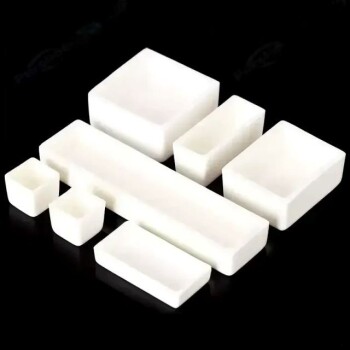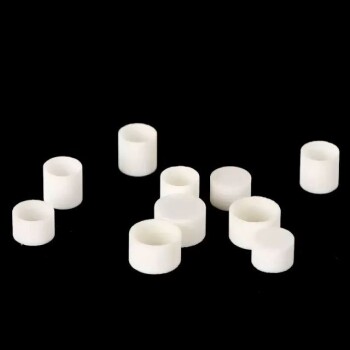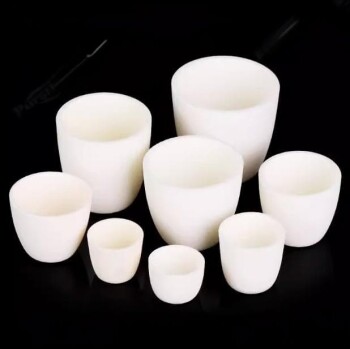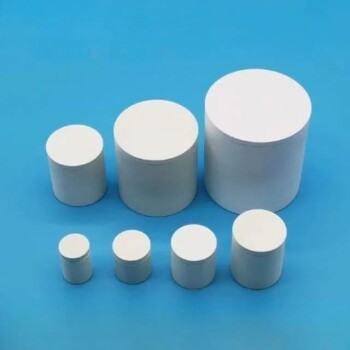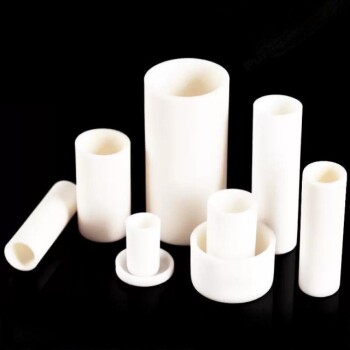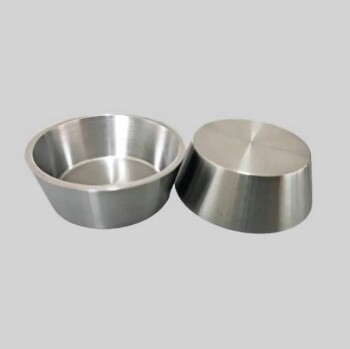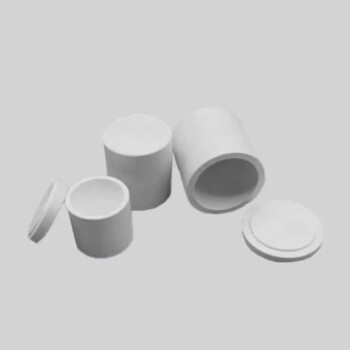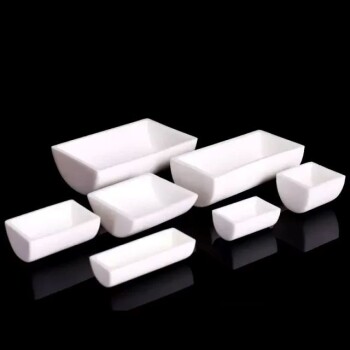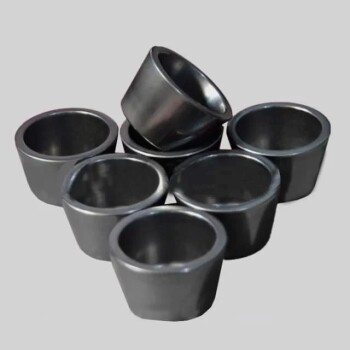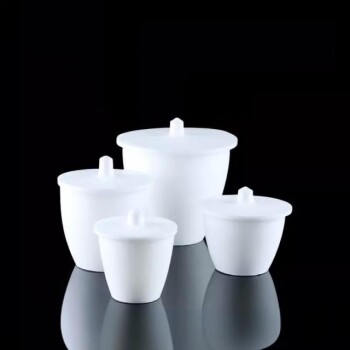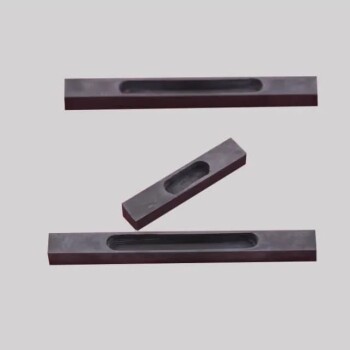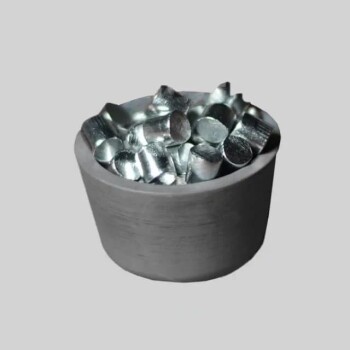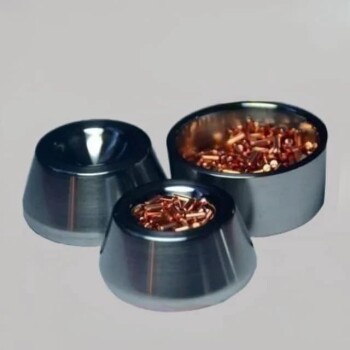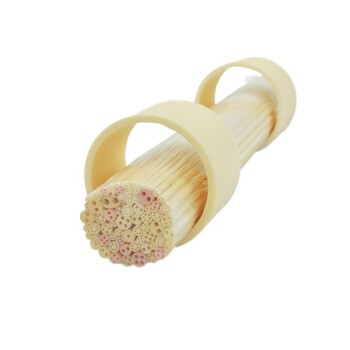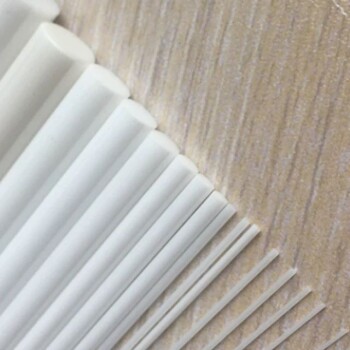Introduction to Crucibles
Definition and Materials
Crucibles are specialized vessels designed for high-temperature applications, primarily used as melting pots. These crucibles are crafted from materials that possess exceptional refractory properties, enabling them to withstand extreme temperatures without degrading. The primary materials used in the fabrication of crucibles can be broadly categorized into two groups: inorganic non-metallic materials and metallic materials that are inherently difficult to melt.
Inorganic non-metallic materials commonly employed include:
- Clay: Known for its excellent thermal stability and widespread availability.
- Graphite: Offers superior thermal conductivity and resistance to chemical侵蚀.
- China Clay: Provides a good balance between thermal resistance and mechanical strength.
On the other hand, metallic materials that are used due to their high melting points and refractory nature include:
- Tungsten: Renowned for its ability to withstand temperatures exceeding 3,000°C.
- Molybdenum: Offers high thermal stability and is often used in specialized applications.
- Niobium: Known for its resistance to both high temperatures and chemical corrosion.
These materials are chosen not only for their refractory properties but also for their ability to maintain structural integrity under high-stress conditions, ensuring that crucibles can perform reliably in various industrial and laboratory settings.
Quartz Crucibles
Uses
Quartz crucibles are indispensable in a wide array of industrial applications, particularly in high-temperature processes. They are utilized for the processing of zirconium oxide and rare earth elements, which are critical in the production of advanced materials and technologies. Additionally, these crucibles play a pivotal role in the drying and melting of precious metals such as gold and silver, ensuring precise and efficient metalworking operations.
In the realm of industrial furnace support, quartz crucibles provide a reliable and durable solution, particularly when used in conjunction with graphite protective sleeves. They are also integral in the polysilicon ingot casting furnace, where their high-temperature resistance and chemical stability are paramount.
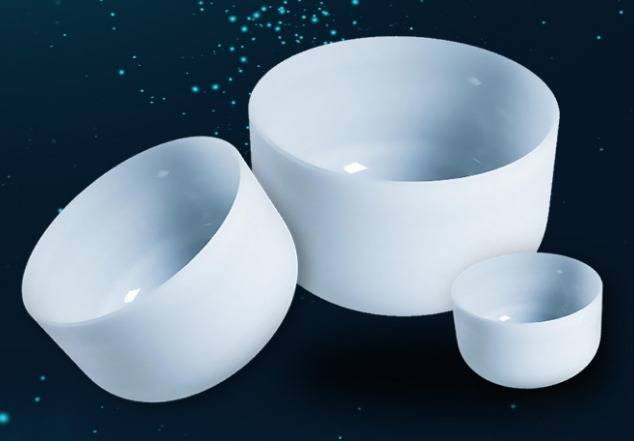
Chemical laboratories benefit significantly from quartz crucibles, which are employed in various industrial analyses, purification processes, and the casting of alloy fittings. The versatility of these crucibles extends to their use in alloy casting, where they ensure the integrity and purity of the final product.
| Application | Material Processed | Key Benefits |
|---|---|---|
| Zirconium Oxide Processing | Zirconium Oxide | High purity, chemical stability |
| Rare Earth Element Processing | Rare Earth Elements | Precise temperature control |
| Precious Metal Melting | Gold, Silver | Efficient metalworking operations |
| Industrial Furnace Support | Graphite Protective Sleeves | Reliable and durable support |
| Polysilicon Ingot Casting | Polysilicon | High-temperature resistance |
| Chemical Laboratory Analysis | Various Industrial Analyses | Versatile and reliable purification |
| Alloy Casting | Alloy Fittings | Ensures product integrity and purity |
Technical Parameters
The technical specifications of quartz crucibles are meticulously designed to ensure optimal performance in high-temperature applications. These crucibles boast a use temperature of up to 1650℃, making them suitable for a wide range of high-temperature processes. The bulk density of these crucibles is a robust ≥1.78 g/cm³, ensuring structural integrity and durability. Additionally, the apparent porosity is kept to a minimum, with a maximum of ≤15%, which aids in maintaining the purity of the materials being processed.
In terms of mechanical strength, quartz crucibles exhibit exceptional normal temperature compressive strength of ≥50 MPA and room temperature bending strength of ≥20 MPA. These properties underscore their reliability and resistance to mechanical stress. The thermal conductivity ranges between 0.6~1.7, providing efficient heat distribution, while the coefficient of thermal expansion is kept at a low ≤0.9×10-6, ensuring stability under varying temperature conditions. Lastly, the crystallinity is maintained at ≤1, contributing to the overall quality and performance of the crucibles.
| Parameter | Specification |
|---|---|
| Use Temperature | 1650℃ |
| Bulk Density | ≥1.78 g/cm³ |
| Apparent Porosity | ≤15% |
| Normal Temperature Compressive Strength | ≥50 MPA |
| Room Temperature Bending Strength | ≥20 MPA |
| Thermal Conductivity | 0.6~1.7 |
| Coefficient of Thermal Expansion | ≤0.9×10-6 |
| Crystallinity | ≤1 |
Advantages
Quartz crucibles offer several compelling advantages, primarily due to their composition from high purity quartz sand. This raw material ensures that the crucibles are not only highly refractory but also possess excellent thermal properties.
One of the standout features is their good heat preservation. Quartz crucibles are designed to maintain high temperatures effectively, which is crucial for various industrial and laboratory applications. This capability minimizes heat loss, ensuring that the contents remain at the desired temperature for extended periods.
Additionally, these crucibles are energy-efficient. The superior heat retention means that less energy is required to maintain the necessary temperature levels, reducing operational costs and environmental impact. This energy-saving aspect makes quartz crucibles an economical choice for industries that require sustained high-temperature processes.
| Advantage | Description |
|---|---|
| High Purity Quartz | Made from high purity quartz sand, ensuring high refractoriness and stability. |
| Good Heat Preservation | Effective at maintaining high temperatures, minimizing heat loss. |
| Energy Saving | Reduces energy consumption by retaining heat efficiently, lowering operational costs. |
Characteristics
Inorganic non-metallic materials used for crucibles exhibit a range of remarkable characteristics that make them indispensable in high-temperature applications. These materials are renowned for their high refractoriness, which allows them to withstand extreme temperatures without melting or deforming. This property is particularly crucial in industries where materials need to be heated to their melting points, such as in metallurgy and glassmaking.
Strong temperature resistance is another key attribute, enabling these crucibles to maintain structural integrity even under prolonged exposure to high temperatures. This ensures that the crucibles can be used repeatedly without significant degradation, thereby reducing operational costs and downtime.
Good electric insulation is a vital characteristic, especially in environments where electrical conductivity could pose safety risks or interfere with the process. This insulation ensures that the crucibles do not conduct electricity, making them safe for use in various industrial settings.
Good thermal shock stability allows these materials to endure sudden temperature changes without cracking or breaking. This is particularly important in processes that involve rapid heating and cooling cycles, such as in the production of semiconductors or in laboratory analyses.
Lastly, good chemical stability ensures that these crucibles do not react with the materials they contain, even under high-temperature conditions. This chemical inertness is essential for maintaining the purity of the substances being processed, whether they are metals, alloys, or chemical compounds.
| Characteristic | Description |
|---|---|
| High Refractoriness | Withstands extreme temperatures without melting or deforming. |
| Strong Temperature Resistance | Maintains structural integrity under prolonged high temperatures. |
| Good Electric Insulation | Does not conduct electricity, ensuring safety and process integrity. |
| Good Thermal Shock Stability | Endures sudden temperature changes without cracking. |
| Good Chemical Stability | Does not react with contained materials, ensuring purity. |
Specifications
Quartz crucibles are available in a variety of sizes to accommodate different applications and requirements. The sizes are typically measured in millimeters and range from small to large capacities. Below is a table detailing the available sizes:
| Size (mm) | Size (mm) |
|---|---|
| 5 | 70 |
| 8 | 80 |
| 10 | 90 |
| 15 | 97 |
| 20 | 110 |
| 30 | 127 |
| 50 | 140 |
| 100 | 160 |
These specifications ensure that quartz crucibles can be selected based on the specific needs of the application, whether it involves melting precious metals, processing fluorescent powder, or conducting industrial analyses.
Aluminum Oxide Crucibles
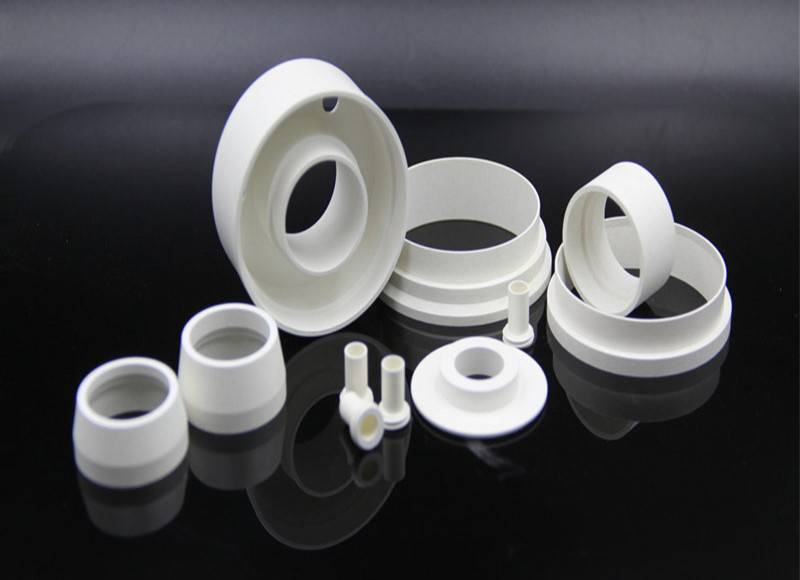
Uses
Alumina crucibles are indispensable in various high-temperature applications, particularly in the fields of electronics and ceramics. They are specifically designed to handle the firing of color TV powder, fluorescent powder, and rare earth materials, ensuring precise temperature control and uniform heat distribution. This makes them ideal for processes requiring high thermal stability and chemical inertness.
For precious metal materials, these crucibles provide an optimal environment for baking, ensuring that the materials maintain their purity and integrity. They are also crucial in the production of ceramic capacitors (both NTC and PTC types) and in the synthesis of lithium cobalt and lithium manganese oxide powders, which are key components in modern batteries.
In summary, alumina crucibles are versatile tools that support a wide range of high-temperature processes, from the production of electronic components to the synthesis of advanced materials. Their ability to withstand extreme conditions while preserving the quality of the materials they handle makes them an essential component in many industrial applications.
Technical Parameters
The technical specifications of alumina crucibles are meticulously designed to ensure optimal performance in high-temperature applications. The key parameters include:
- Al2O3 Content: A high purity of 99.8%, ensuring superior refractory properties.
- SiO2 Content: Less than 0.1%, minimizing impurities that could affect the crucible's performance.
- Density: 3.95 g/cm³, providing a balance between weight and strength.
| Parameter | Value |
|---|---|
| Al2O3 Content | 99.8% |
| SiO2 Content | <0.1% |
| Density | 3.95 g/cm³ |
| Water Absorption | 0% |
| Normal Temperature Pressure Resistance | 450 MPa |
| Leakage rate at 20°C | <10-11 Torr/L.sec |
| High temperature bending | 1700℃ allowed 0.2 mm |
| High temperature bonding | No bonding at 1750°C |
| Thermal conductivity | 25 W/m.k |
| Electrical insulation strength | 20 KV/mm |
| High temperature insulation resistance | 1000℃ MΩ ≥0.08, 1300℃ MΩ ≥0.02 |
| Resistance to rapid cooling and heating | 1750℃ 6 times without cracking |
| Maximum use temperature | 1900℃ |
These specifications highlight the crucible's ability to withstand extreme conditions, making it ideal for applications requiring high-temperature stability and chemical inertness.
Specifications
The capacity of alumina crucibles varies significantly to cater to different application needs. The available capacities range from as small as 5 ml to as large as 2000 ml. This wide range allows for flexibility in handling various quantities of materials, whether for small-scale laboratory experiments or large-scale industrial processes. Below is a detailed list of the available capacities:
- Small Capacities: 5 ml, 10 ml, 15 ml, 18 ml, 20 ml, 24 ml, 25 ml, 28 ml, 29 ml, 30 ml, 34 ml, 35 ml
- Medium Capacities: 42 ml, 48 ml, 50 ml, 54 ml, 58 ml, 68 ml, 70 ml, 82 ml, 90 ml, 112 ml, 125 ml, 132 ml, 148 ml, 159 ml, 175 ml
- Large Capacities: 750 ml, 1000 ml, 2000 ml
This comprehensive range ensures that users can select the most appropriate crucible size for their specific requirements, balancing efficiency with the need for precise material handling.
Magnesium Oxide Crucibles
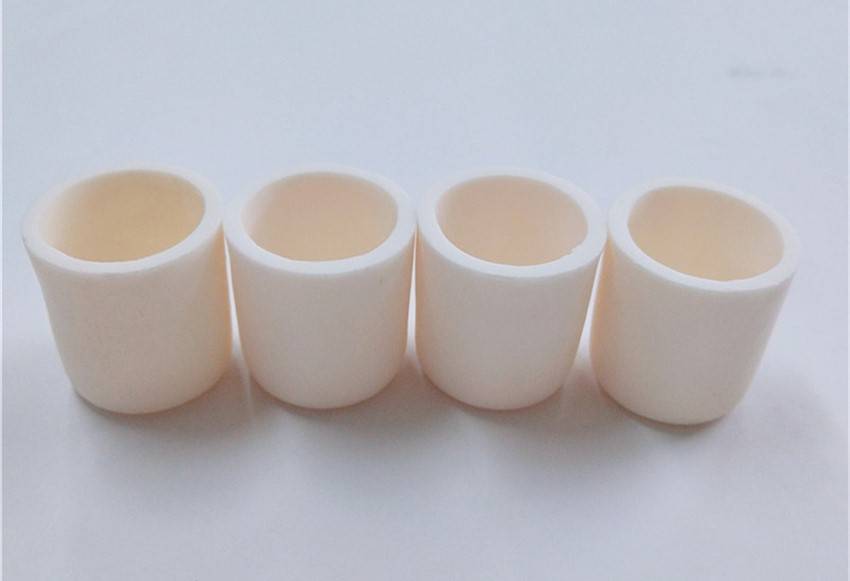
Uses
Magnesium oxide crucibles are indispensable in the realm of high-temperature metallurgical processes. They are primarily employed for the smelting of non-ferrous metals and precious metals, including platinum, rhodium, and iridium. These crucibles are also crucial for the melting of high-purity radioactive metals such as uranium and thorium alloys, as well as iron and its alloys in vacuum melting environments.
In addition to their role in metal processing, magnesium oxide crucibles serve as high-temperature thermocouple protection tubes and furnace lining materials. These applications underscore their robust temperature resistance and chemical stability, making them suitable for environments where extreme conditions are the norm.
For instance, in the nuclear industry, the need for precise control over the purity and composition of materials is paramount. Magnesium oxide crucibles provide the necessary inertness and thermal stability to ensure that the integrity of radioactive materials is maintained throughout the melting process. Similarly, in the realm of precious metals, the high purity and refractory properties of magnesium oxide crucibles are essential for achieving the exacting standards required in jewelry and industrial applications.
Moreover, the versatility of magnesium oxide crucibles extends to their use in high-temperature furnaces. Here, they act as both protective and functional elements, ensuring that thermocouples operate accurately and that the furnace lining remains intact under prolonged exposure to high temperatures. This dual functionality highlights the critical role that magnesium oxide crucibles play in maintaining the efficiency and longevity of high-temperature industrial operations.
Technical Parameters
Magnesium oxide crucibles are characterized by their exceptional technical specifications, which make them suitable for high-temperature applications. The primary component of these crucibles is magnesium oxide (MgO), with a purity level of at least 99%. This high purity ensures that the material is highly resistant to thermal degradation and chemical reactions.
| Parameter | Specification |
|---|---|
| Main Component | MgO ≥ 99% |
| Main Crystal Phase | Magnesite |
| Melting Point | 2700°C |
| Maximum Use Temperature | 2000°C |
| Porosity | ≤ 1.0% |
| Bulk Density | 3.3~3.5 g/cm³ |
The high melting point of 2700°C underscores the material's refractory nature, allowing it to withstand extreme temperatures without melting. The maximum use temperature of 2000°C further validates its suitability for high-temperature processes, such as the smelting of non-ferrous metals and precious metals.
The low porosity, at ≤ 1.0%, ensures minimal air gaps within the material, which is crucial for maintaining structural integrity and preventing leaks during high-temperature operations. The bulk density range of 3.3 to 3.5 g/cm³ indicates a dense and robust structure, which contributes to the crucible's durability and thermal efficiency.
Zirconia Crucibles
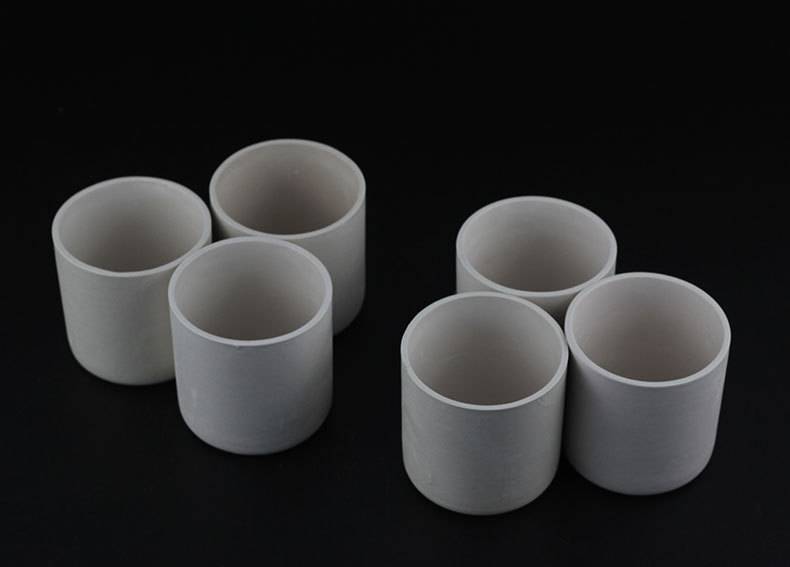
Uses
Zirconia crucibles are indispensable in various high-temperature industrial processes. They are primarily used in shuttle kilns and push plate kilns to burn colorants, frits, pigments, luminous materials, and other optical glass materials. This application ensures uniform heating and precise control over the chemical reactions occurring within the crucible.
In addition to their role in optical glass production, zirconia crucibles are also employed for the analysis and firing of mineral raw materials such as rare earths. These crucibles provide a stable environment for the synthesis of ceramic powders and other high-temperature products. The high refractoriness and thermal stability of zirconia crucibles make them ideal for these demanding applications.
Another significant use of zirconia crucibles is in the melting of precious metals like platinum, rhodium, and iridium. These metals require crucibles that can withstand extreme temperatures and maintain their structural integrity. Zirconia crucibles not only meet these requirements but also ensure minimal contamination, which is crucial for high-purity metal production.
| Application | Materials Processed | Temperature Range |
|---|---|---|
| Optical Glass | Colorants, Frit, Pigments, Luminous Materials | Up to 1700°C |
| Mineral Analysis | Rare Earths | Up to 1800°C |
| Precious Metal Melting | Platinum, Rhodium, Iridium | Up to 2000°C |
The versatility and robustness of zirconia crucibles make them a preferred choice in industries requiring high-temperature processing and precise material synthesis. Their ability to withstand rapid cooling and heating cycles further enhances their utility in these applications.
Advantages
Zirconia crucibles offer a range of advantages that make them particularly suitable for high-temperature applications. Their resistance to burning ensures that they maintain structural integrity even under extreme heat conditions. This is complemented by their high thermal conductivity, which facilitates efficient heat transfer, making them ideal for processes requiring rapid temperature changes.
One of the standout features of zirconia crucibles is their ultra-low coefficient of expansion. This property minimizes the risk of thermal shock, allowing the crucibles to withstand rapid cooling and heating cycles without cracking. The material's good high thermal stability further enhances its reliability in long-term, high-temperature operations.
The long service life of zirconia crucibles is another significant advantage, particularly in industries where frequent replacement of equipment is costly and disruptive. Their fast heat conduction and low energy consumption attributes contribute to energy savings, making them an environmentally friendly choice.
Additionally, the inner wall lightness and non-stick powder characteristics of zirconia crucibles reduce the need for rare earth polishing, thereby lowering operational costs and environmental impact. This combination of physical and thermal properties makes zirconia crucibles a superior choice for applications involving precious metals and high-purity materials.
Characteristics
Zirconia crucibles exhibit a range of exceptional characteristics that make them highly suitable for various high-temperature applications. One of their most notable features is their high refractoriness, which allows them to withstand extreme temperatures without deforming or breaking. This property is crucial for tasks that require prolonged exposure to high heat, such as melting precious metals and alloys.
In addition to their high refractoriness, zirconia crucibles are resistant to scouring. This means they can endure abrasive conditions without losing their structural integrity, making them ideal for use in environments where they may come into contact with abrasive materials.
Corrosion resistance is another key characteristic of zirconia crucibles. They are capable of withstanding harsh chemical environments, which is particularly important in industries where corrosive substances are involved. This resistance ensures that the crucibles remain functional and safe for use over extended periods.
Furthermore, zirconia crucibles possess high hardness. This attribute contributes to their durability and longevity, as the high hardness prevents wear and tear from affecting their performance. The combination of these characteristics makes zirconia crucibles a robust choice for numerous industrial and laboratory applications.
Calcium Oxide Crucibles
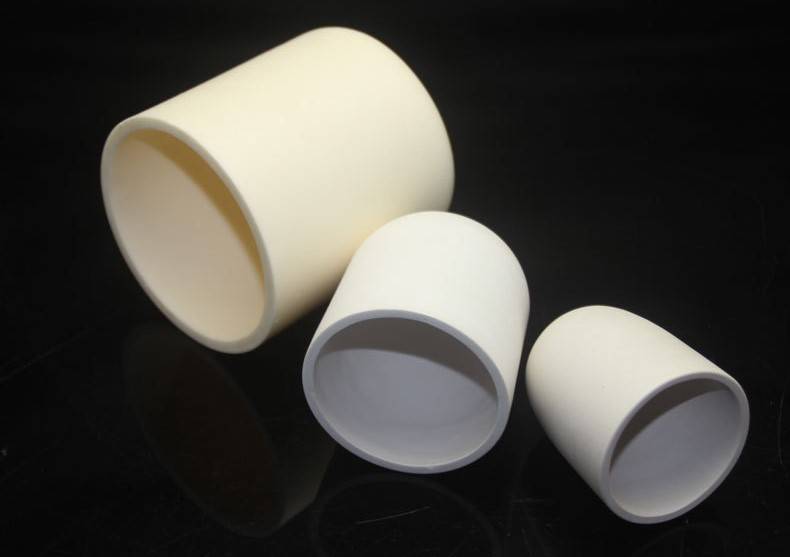
Uses
Calcium oxide crucibles are renowned for their specialized applications in high-precision metallurgical processes. Specifically, they are indispensable in the smelting of ultra-low oxygen steel and non-ferrous metals where oxygen content is meticulously controlled. This stringent requirement is critical in industries such as aerospace and electronics, where the purity of metals directly impacts the performance and reliability of components.
In addition to their role in oxygen reduction, calcium oxide crucibles play a pivotal part in the purification of metals. They are adept at further reducing sulfur and other harmful impurities in steel, thereby enhancing the overall quality and integrity of the final product. This dual capability makes calcium oxide crucibles a preferred choice in advanced metallurgical applications, ensuring both purity and precision in metal production.
Refractory Carbide, Nitride, Boride, and Silicide Crucibles
Carbides
Carbides exhibit remarkable stability under vacuum or protective atmospheres, making them highly desirable for high-temperature applications. Specifically, carbides with low vapor pressure, such as Ta₂C, TiC, ZrC, HfC, and WC, demonstrate exceptional stability even in extreme conditions. These materials can remain stable up to temperatures as high as 2500°C in a vacuum, with only minimal volatilization occurring.
| Carbide | Stability in Vacuum | Maximum Temperature |
|---|---|---|
| Ta₂C | High | 2500°C |
| TiC | High | 2500°C |
| ZrC | High | 2500°C |
| HfC | High | 2500°C |
| WC | High | 2500°C |
The stability of these carbides is particularly crucial in applications where maintaining a high-purity environment is essential, such as in the production of semiconductor materials and advanced ceramics. Their ability to withstand extreme temperatures without significant degradation ensures that they can be used in crucibles and other high-temperature vessels, providing a reliable and durable solution for industrial processes.
Nitrides
Nitrides, formed from elements in groups ⅢB, ⅣB, VB, and ⅥB of the periodic table, exhibit remarkable properties that make them highly valuable in various industrial applications. These compounds are characterized by their high melting points, which are a direct result of the strong covalent bonds formed between nitrogen and the metal elements. Among these, nitrides of group ⅣB, VB, and ⅥB elements are particularly notable for their metallic luster and extreme hardness.
| Element Group | Common Nitrides | Properties |
|---|---|---|
| ⅣB | Titanium Nitride (TiN), Zirconium Nitride (ZrN) | High hardness, metallic luster, excellent thermal stability |
| VB | Vanadium Nitride (VN), Niobium Nitride (NbN) | High melting point, strong mechanical properties |
| ⅥB | Chromium Nitride (CrN), Molybdenum Nitride (MoN) | Exceptional hardness, good thermal and electrical conductivity |
In addition to the aforementioned nitrides, boron nitride (BN), aluminum nitride (AlN), and silicon nitride (SiN) are also highly stable and possess unique characteristics. Boron nitride, for instance, is known for its hexagonal structure, which provides excellent thermal conductivity and electrical insulation properties. Aluminum nitride is prized for its high thermal conductivity and stability under extreme conditions, making it ideal for use in high-temperature applications such as crucibles. Silicon nitride, on the other hand, is renowned for its exceptional wear resistance and thermal shock resistance, which are crucial in high-stress environments.
These nitrides are not only stable under standard conditions but also retain their integrity at elevated temperatures, making them suitable for use in crucibles and other high-temperature applications. Their unique combination of mechanical strength, thermal stability, and chemical inertness positions them as key materials in the field of inorganic non-metallic materials.
Boron Nitride Crucibles
Boron nitride crucibles are indispensable in high-temperature applications, particularly in the semiconductor and metallurgy industries. These crucibles are crafted from boron nitride ceramics, which boast exceptional properties that make them ideal for various demanding tasks. Boron nitride, often referred to as BN or Hexagonal Boron Nitride (H-BN), is renowned for its high-temperature resistance and excellent corrosion and electrical resistance. This material can withstand extreme temperatures in high vacuum environments while maintaining its structural integrity and lubricating capabilities.
Key Applications
-
Semiconductor Manufacturing: Boron nitride crucibles are extensively used in the production of semiconductors, where they serve as high-temperature containers for melting and processing materials. Their ability to maintain a stable environment under extreme conditions ensures the purity and quality of the semiconductors produced.
-
Metallurgy: In metallurgical processes, these crucibles are employed for melting metals, particularly in high-vacuum settings. Their corrosion resistance and high-temperature stability make them suitable for handling a variety of metals, including precious and rare earth metals.
-
Heat Dissipation and Insulation: Boron nitride crucibles are also used in the fabrication of heat dissipation and insulation parts for semiconductor devices. Their thermal properties help in managing heat effectively, thereby enhancing the performance and longevity of semiconductor components.
-
High-Temperature Bearings and Bushings: The self-lubricating nature of boron nitride makes it an excellent choice for high-temperature bearings and thermocouple bushings. These components require materials that can withstand continuous friction and high temperatures, and boron nitride delivers on both counts.
-
Glass-Forming Molds: In the glass industry, boron nitride crucibles are used as molds for forming glass products. Their high-temperature resistance and non-reactive properties ensure that the glass remains pure and free from any contaminants.
Technical Advantages
-
High-Temperature Stability: Boron nitride crucibles can operate in temperatures exceeding 2000°C, making them suitable for a wide range of high-temperature applications.
-
Corrosion Resistance: The material's inherent resistance to corrosive agents ensures that the crucibles remain functional and effective even in harsh chemical environments.
-
Electrical Insulation: Boron nitride's excellent electrical resistance properties make it an ideal choice for applications requiring both high-temperature and electrical insulation capabilities.
-
Self-Lubricating: The material's self-lubricating properties reduce wear and tear, extending the lifespan of the components made from it.
In summary, boron nitride crucibles are a versatile and robust solution for high-temperature applications, offering a combination of thermal, chemical, and electrical properties that are unmatched by many other materials.
Borides
Borides of group IVB, VB, and VIB refractory metals in the periodic table exhibit remarkable properties that make them ideal for applications at extremely high temperatures. These borides boast melting points ranging from 2000 to 3000°C, which underscores their exceptional thermal stability. Additionally, they are non-volatile, ensuring that they retain their structural integrity even under intense heat.
| Property | Description |
|---|---|
| Melting Point | 2000-3000°C |
| Volatility | Non-volatile |
| Electrical Resistance | Low |
| Hardness | High |
| Stability | Good |
Related Products
- Engineering Advanced Fine Alumina Al2O3 Ceramic Crucible for Laboratory Muffle Furnace
- Engineering Advanced Fine Ceramics Alumina Crucibles (Al2O3) for Thermal Analysis TGA DTA
- Arc-Shaped Alumina Ceramic Crucible High Temperature Resistant for Engineering Advanced Fine Ceramics
- Boron Nitride (BN) Crucible for Phosphorous Powder Sintered
- Engineering Advanced Fine Ceramics Alumina Al2O3 Crucible With Lid Cylindrical Laboratory Crucible
Related Articles
- Vacuum Induction Melting Furnace vs Arc Melting Furnace: Choosing the Right Equipment for Your Process
- Comprehensive Guide to Atmosphere Furnaces: Types, Applications, and Benefits
- Alumina Crucibles in Precision Casting
- The Role of Laboratory Ovens in Scientific Research and Industry
- The Effect of Powder Moisture Content on Cold Isostatic Pressing

